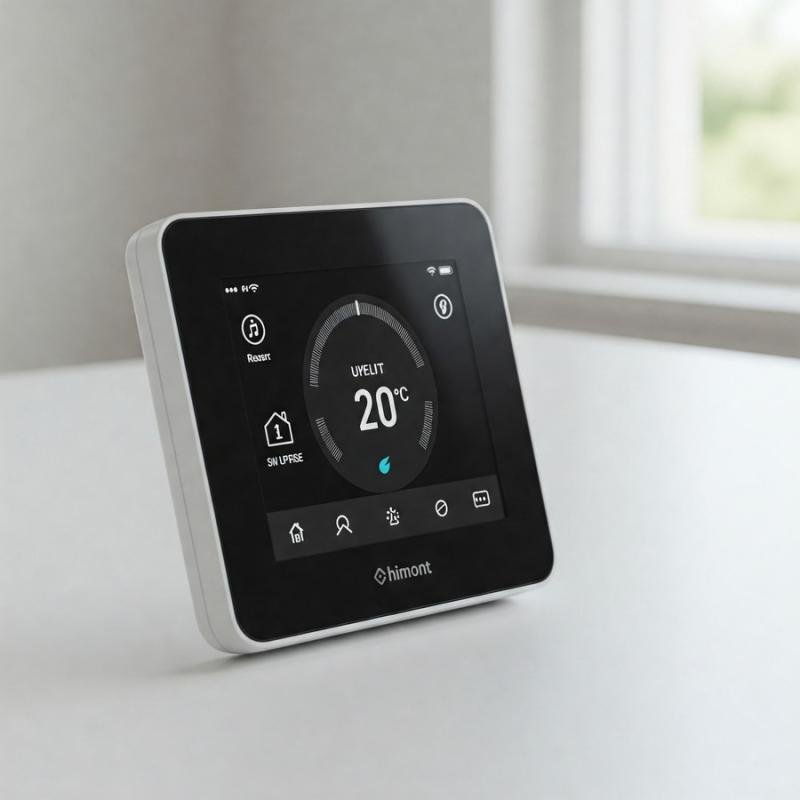The global smart thermostat market is poised for substantial growth over the coming decade as rising energy conservation initiatives, the proliferation of smart home technologies, and increasingly stringent government regulations propel market expansion. A recently released comprehensive market report forecasts that the industry, valued at USD 1.8 Bn in 2022, will grow at a compound annual growth rate (CAGR) of 10.3% from 2023 to 2031 and reach USD 4.6 Bn by the end of 2031. This press release outlines an in-depth analysis of market drivers, key industry players, recent technological developments, regional insights, and segmentation details, while also addressing frequently asked questions to help stakeholders navigate this dynamic landscape.
Get a concise overview of key insights from our Report in this sample – https://www.transparencymarketresearch.com/sample/sample.php?flag=S&rep_id=4573
Market Overview
Smart thermostats have transformed traditional HVAC control by integrating advanced connectivity and automation. These Wi-Fi-enabled devices are designed to optimize home heating, ventilation, and air conditioning systems based on real-time feedback from occupancy, temperature, and proximity sensors. The integration of Internet of Things (IoT) technology in these devices not only delivers enhanced energy efficiency but also offers unparalleled convenience and customization. In the backdrop of escalating energy costs and the urgency to reduce carbon footprints, smart thermostats are increasingly being adopted in both residential and commercial sectors.
The current market landscape is marked by the rapid advancement of technology, including artificial intelligence (AI) and machine learning, which continuously improve device performance. Smart thermostat applications now allow users to remotely manage their home environments via smartphones, tablets, or voice-activated devices like Amazon Alexa and Google Assistant. Such innovations underscore the market’s potential for sustained growth and increased adoption rates.
Market Drivers & Trends
Energy Conservation and Environmental Sustainability:
One of the primary drivers of the smart thermostat market is the growing emphasis on energy conservation. As household electronics, especially HVAC systems, consume significant amounts of power, smart thermostats offer a strategic solution to reduce energy usage by intelligently regulating system operations. This results in not only reduced electricity bills but also a lower carbon footprint a critical factor in meeting stringent environmental regulations.
Rising Popularity of Smart Home Technologies:
The demand for interconnected smart home solutions is on the rise. Consumers now expect seamless integration of devices that can be controlled remotely, ensuring optimal comfort and energy efficiency. The market is witnessing a shift from conventional thermostats to devices that leverage AI and machine learning, learning individual user preferences to adjust temperatures automatically.
Wireless Connectivity and Ease of Installation:
Wireless technology has emerged as a major trend within the industry. Smart thermostats equipped with Wi-Fi, Bluetooth, and other wireless protocols allow for simple installation and flexible operation. This connectivity supports not only remote control but also real-time performance monitoring through smart alerts and service reminders, which further enhances their appeal.
Government Regulations and Incentives:
Governments across the globe are implementing policies aimed at reducing energy consumption and carbon emissions. These regulatory measures are driving the adoption of energy-efficient technologies such as smart thermostats in both commercial and residential sectors, thereby bolstering market growth.
Key Players and Industry Leaders
The competitive landscape of the smart thermostat market features established companies and innovative new entrants, all vying for market share through strategic initiatives, product innovation, and partnerships. Leading players include:
Carrier
Control4 (Snap One, LLC)
ecobee
Google Nest
Ingersoll Rand Inc.
Emerson Electric Co.
Honeywell International Inc.
Schneider Electric SE
Nortek (Madison Industries)
tado GmbH
Pro1iaq
These industry leaders continue to expand their product portfolios, innovate with new technologies, and forge strategic partnerships to strengthen their positions in the global market. Their concerted focus on research and development (R&D) is driving the evolution of smart thermostat features, enabling enhanced energy management capabilities and improved user experiences.
Recent Developments
Recent industry developments underscore the momentum driving the smart thermostat market:
Strategic Partnerships:
In September 2022, Autogrid, an innovative energy company, entered into a partnership with Mysa, a smart thermostat manufacturer, to launch utility-scale virtual power plants. This collaboration leverages smart thermostat technology to modernize the electrical grid and optimize energy distribution.
Product Innovations:
In May 2022, Ecobee unveiled its new Ecobee Smart Thermostat Premium and Smart Thermostat Enhanced models. These products, which are set to replace the flagship SmartThermostat with Voice Control, incorporate advanced features such as AI-driven learning algorithms and improved connectivity options, ensuring superior energy management and user comfort.
These developments are indicative of the industry’s commitment to leveraging technology to enhance energy efficiency and user convenience, while also setting new benchmarks in product performance.
Review our report to gain deeper insights and understanding – https://www.transparencymarketresearch.com/smart-thermostats-market.html
Market Challenges and Opportunities
While the outlook for the smart thermostat market remains robust, several challenges must be navigated to ensure sustained growth:
Challenges:
Integration and Compatibility:
As smart home ecosystems evolve, ensuring compatibility between various devices and platforms remains a key challenge. Manufacturers must work towards standardized protocols to avoid fragmentation in the market.
High Initial Costs:
Despite long-term savings on energy bills, the initial investment for smart thermostats can be prohibitive for some consumers, especially in cost-sensitive markets.
Cybersecurity Risks:
With increased connectivity, smart thermostats are exposed to potential cybersecurity vulnerabilities. Robust security measures are required to protect user data and ensure system integrity.
Opportunities:
Technological Advancements:
Ongoing R&D in AI, machine learning, and IoT integration opens up significant opportunities for product innovation and market differentiation.
Expansion in Commercial Sectors:
Beyond residential applications, the commercial sector offers vast potential. Offices, retail spaces, hospitals, and educational institutions are increasingly investing in smart energy management systems.
Global Market Penetration:
Emerging economies in regions such as Asia Pacific, Latin America, and the Middle East present untapped markets. As infrastructure develops and consumer awareness increases, these regions are set to drive future market growth.
Market Segmentation
The smart thermostat market is segmented by component, connectivity, application, and region to provide a detailed view of the market dynamics:
Component:
Display: User interfaces that offer intuitive control and feedback.
Temperature Sensor: Critical for accurate temperature measurement.
Humidity Sensor: Provides insights into ambient moisture levels for optimal HVAC operation.
Motion Sensor and Others: Enhance automation through occupancy detection.
Connectivity:
Wired: Traditional connection methods that offer reliable performance.
Wireless:
Wi-Fi: Facilitates remote control and real-time data monitoring.
Bluetooth: Enables short-range communication with smart devices.
Others (including Zigbee): Offer additional integration options.
Application:
Residential: The primary market, focusing on energy savings and home automation.
Commercial: Includes office spaces, educational institutions, retail outlets, hospitals, and industrial applications.
Others: Cover emerging sectors where smart energy management is gaining traction.
Regional Insights:
North America: Expected to hold the largest market share due to high adoption rates of smart home technologies and robust investment in energy conservation.
Europe and Asia Pacific: Emerging as key growth regions with increasing urbanization and infrastructure development.
South America, Middle East & Africa: Represent emerging markets with significant growth potential as awareness and investment in energy-efficient solutions expand.
Regional Insights
North America remains the dominant region in the smart thermostat market, driven by rapid adoption of home automation and a high dependency on mobile technologies. In this region, the focus on energy conservation is further amplified by stringent government regulations and incentives promoting sustainable practices. Similarly, Europe and Asia Pacific are witnessing rapid growth due to industrialization, improved infrastructure, and rising consumer awareness about environmental sustainability. These regions offer promising opportunities for manufacturers to expand their market reach through localized product adaptations and strategic alliances.
Future Outlook
Looking ahead to 2031, the smart thermostat market is expected to experience transformative growth. The integration of cutting-edge technologies such as AI, machine learning, and IoT will continue to enhance device capabilities, making them more efficient and user-friendly. With rising energy costs and increasing environmental concerns, consumers and businesses alike will prioritize energy management solutions that deliver long-term savings and environmental benefits.
In addition, the ongoing expansion of smart home ecosystems will drive further innovation and product diversification. As manufacturers overcome current challenges related to integration, cost, and cybersecurity, the market is poised to unlock new revenue streams and achieve significant global penetration. This positive outlook is supported by robust market research and analyst viewpoints that emphasize the role of energy conservation, regulatory support, and consumer demand in shaping the future of the industry.
Buy this Premium Research Report to access comprehensive analysis – https://www.transparencymarketresearch.com/checkout.php?rep_id=4573<ype=S
Frequently Asked Questions
What is driving the growth of the smart thermostat market?
Rising energy conservation initiatives, the popularity of smart home technologies, and stringent government regulations to reduce carbon footprints are the key growth drivers.
What is the market forecast for smart thermostats by 2031?
The market, valued at US$ 1.8 Bn in 2022, is expected to reach US$ 4.6 Bn by 2031, growing at a CAGR of 10.3% during the forecast period from 2023 to 2031.
Which regions are expected to lead the market?
North America is projected to hold the largest share due to high adoption of home automation technologies. Europe and Asia Pacific are also emerging as key regions with strong growth prospects.
Who are the key players in the smart thermostat market?
Leading companies include Carrier, Control4 (Snap One, LLC), ecobee, Google Nest, Ingersoll Rand Inc., Emerson Electric Co., Honeywell International Inc., Schneider Electric SE, Nortek (Madison Industries), tado GmbH, and Pro1iaq.
What technological innovations are being integrated into smart thermostats?
Advancements include the use of AI and machine learning for personalized temperature control, along with enhanced wireless connectivity options such as Wi-Fi and Bluetooth, which allow remote management and integration with smart home systems.
What challenges does the market face?
Challenges include ensuring device compatibility across platforms, managing initial costs, and addressing cybersecurity risks associated with increased connectivity.
How can the report help industry stakeholders?
The report offers comprehensive insights into market trends, competitive landscapes, segmentation, and regional analysis, which can aid in strategic planning, identifying opportunities, and mitigating potential risks.
Explore Latest Research Reports by Transparency Market Research:
Photoelectric Sensors Market: https://www.transparencymarketresearch.com/photoelectric-sensors-market.html
Terahertz Components and Systems Market: https://www.transparencymarketresearch.com/terahertz-components-systems-market.html
About Transparency Market Research
Transparency Market Research, a global market research company registered at Wilmington, Delaware, United States, provides custom research and consulting services. Our exclusive blend of quantitative forecasting and trends analysis provides forward-looking insights for thousands of decision makers. Our experienced team of Analysts, Researchers, and Consultants use proprietary data sources and various tools & techniques to gather and analyses information.
Our data repository is continuously updated and revised by a team of research experts, so that it always reflects the latest trends and information. With a broad research and analysis capability, Transparency Market Research employs rigorous primary and secondary research techniques in developing distinctive data sets and research material for business reports.
Contact:
Transparency Market Research Inc.
CORPORATE HEADQUARTER DOWNTOWN,
1000 N. West Street,
Suite 1200, Wilmington, Delaware 19801 USA
Tel: +1-518-618-1030
USA – Canada Toll Free: 866-552-3453
Website: https://www.transparencymarketresearch.com
Email: sales@transparencymarketresearch.com
This release was published on openPR.

















